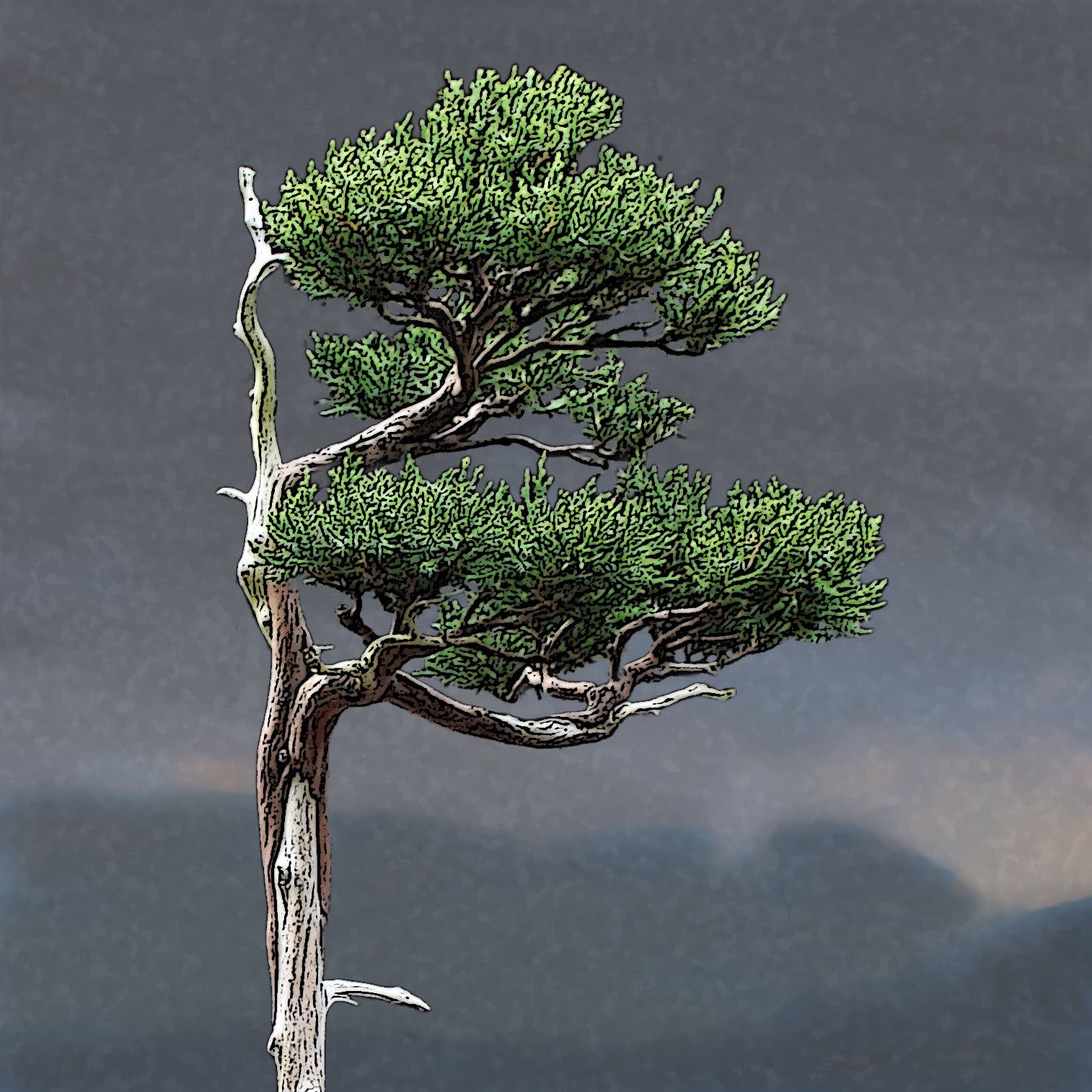It takes a little imagination for a water feature like Mountain Spring to mentally transport a viewer to some other, more natural watering hole in the forest. But even if the viewer has no imagination, they can still appreciate just the sight and sound of water cascading over the face of a big, craggy rock and into a pool. That experience is elemental and accessible. It's another matter altogether when the water feature is conceptual — that is, when the water feature doesn't actually have any water in it.
Read MoreThis little feature works familiar bonsai territory — the suggestion, in simple strokes, of something greater, calling upon the imagination of the viewer to make the connection. In the mind's eye of the visitor standing at the railing, the little splash of water may bring them back to the seclusion of a forest retreat.
Read MoreRedcedar is not a favored bonsai subject, I think mostly because it is difficult to find suitable old trees with which to work. Trying to grow a redcedar bonsai from young material is a long term, long shot project. All four of the redcedar bonsai in our collection were donated to us, so they all had some age on them before we started working on them.
Read MoreOn the eve of construction, before the bulldozer came to work over the site in preparation for building the garden, I dug up one of the scraggly young serviceberries and put it in a pot. The little two-trunked tree didn't look like much. Collecting it was an impulsive act, done in the spirit of saving some living piece of what used to be, knowing that the space was about to be transformed.
Read MoreThe time leading up to the big weekend is a strange mix. There's stress because there's demand and a deadline, and the closer the deadline gets the more stress there is. The deadline is a worry, but that which must be done by the deadline is very enjoyable and really shouldn't be rushed, and therein lies the problem. All the high-value, creative pruning work an avid pruner could wish for comes due all at once, with a deadline.
Read MoreThe little red maple trees in the tray landscapes grew and presented a set of options with the multitude of parts they produced. In shaping them I relied entirely on the cut-and-grow method, using no training wire. With a pair of scissors I went about imagining life stories for the landscape trees, making choices as to what parts were lost and what path the canopy branches followed in their unending quest for sunlight.
Read MoreThree Asian species — Japanese maple (Acer palmatum), trident maple (Acer buergerianum) and Amur maple (Acer ginnala) — are all considered excellent for bonsai use. Why not red maple, which is abundantly available in Western North Carolina? The answers I heard from bonsai people I asked were so emphatically negative I became leery of even asking.
Read MoreThe experience is suggestive, not limited by any need for what the viewer is looking at to be literally "old." The plants are shaped to look like they are old, to mimic the effects of age, done in a way convincing enough that the illusion prompts a response similar to what people would experience if they were in the presence of full-sized old trees of great character. Bonsai art, like all other art, works on our minds at the crossroads of memory and imagination.
Read MoreThe incredible character of these naturally miniaturized specimens lies somewhere at the heart of the bonsai impulse. Nature has always produced such trees in environmental extremes all over the world. Humans have always found something in the nature of these trees that speaks to us, compelling us to a more philosophic state of mind. They inspire us.
Read More







